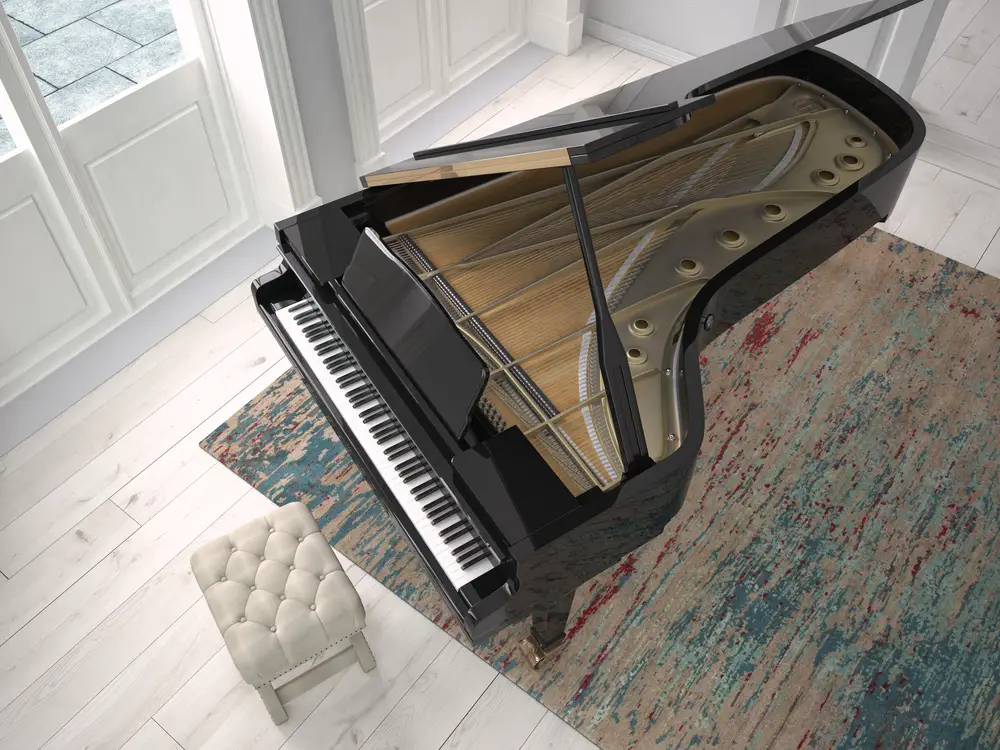
How many parts does a piano have? And, how do they work together?
These are common questions for piano owners (both new and seasoned).
Table of Contents
- Parts of a Piano
- Keyboard
- Pedals
- Lid and Housing
- Strings, Hammers, and Keys
- Soundboard
- How Many Total Parts in a Piano?
- Excellent Video Reviewing the Parts of a Piano
- Conclusion
Pianos are highly complex instruments with hundreds of different parts. In this article, I’ll explain these mechanisms in a simple way.
Parts of a Piano
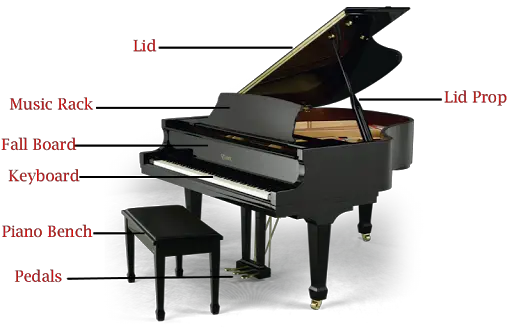
Here’s a list of the main parts of a piano:
- Keyboard
- Pedals
- Lid and Housing
- Strings, hammers, and keys
- Soundboard
Keyboard
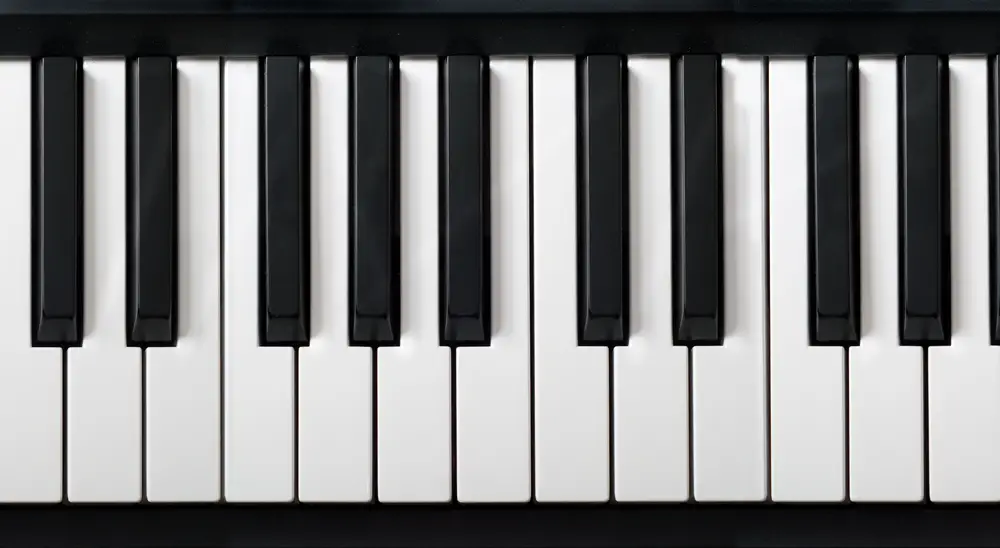
The keyboard is the main focus of all pianos.
Most pianos have 88 keys. They also have something called a graded action.
This concept means the lower keys are slightly heavier to push down than the higher ones. Why is this? The reason is based on the simple physics of string weight. Higher notes have thinner strings and don’t require much striking force from the hammers. The lower strings, however, require more force to create sound. To have a balanced sound, piano manufacturers make the low hammers slightly heavier, producing more inertia to the strings.
The keys on your piano are either made with plastic or ivory. However, ivory pianos were banned all over the world in 1990. Since so many were produced, you might have even one in your house. The easiest way to tell is by looking for a yellowing of the keys. Plastic keys stay white for a long time, while ivory keys turn yellow.
Pedals
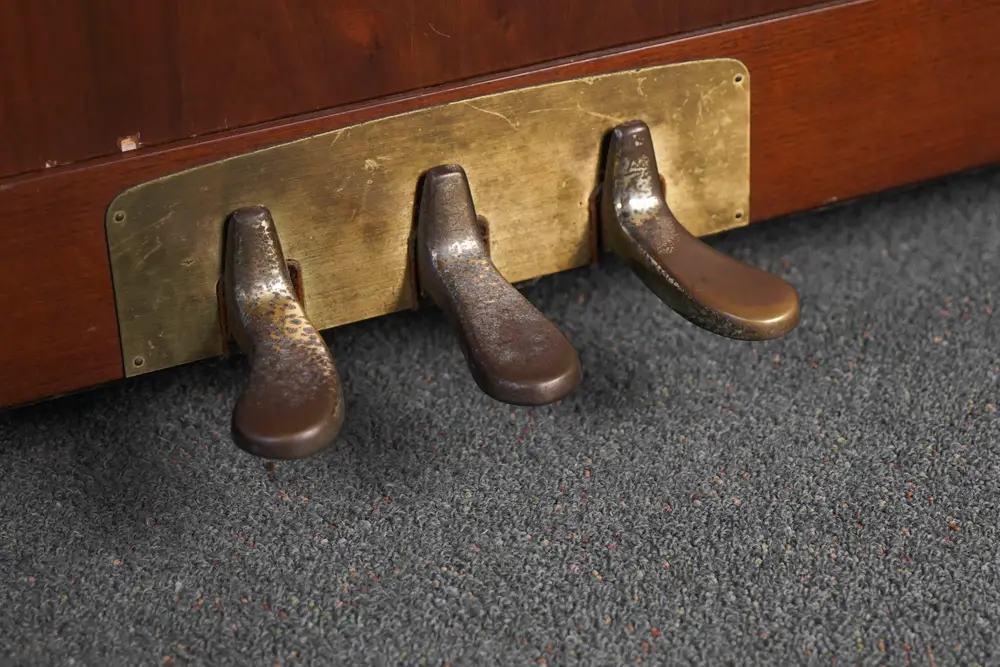
Pianos have 2 to 3 pedals, depending on the model. From right to left, they are the sustain, sostenuto, and soft pedals. They’re made of metal and give the piano a more expressive range.
Some pianos have hard-to-push pedals, while others are lighter. This variable depends on the weight of the dampers. Normally, the dampers rest on the strings to create a pure, unsustained sound. When you push on the sustain pedal, those dampers are lifted off the strings, allowing each string to resonate freely.
On the far left is the soft pedal. This pedal is basically a way to lower the piano’s volume. It also creates a slightly different sound, commonly described as warmer. So, how does it work? The soft pedal works by shifting the hammers to hit only 2 strings instead of 3.
The middle pedal is the least popular among pianists. It acts like a sustain pedal for the bass notes, leaving the mid and high notes dry. You might use this pedal when playing a melody over a grounded bass note.
Lid and Housing
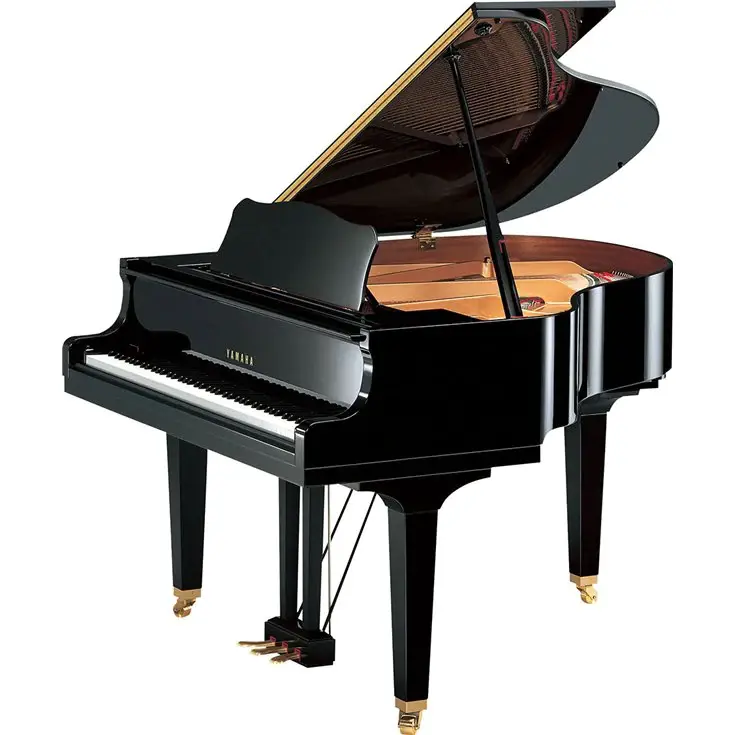
No matter the type of acoustic piano, it always has a lid. You can raise the lid on grand pianos for a louder and more resonant sound. Doing this also exposes the strings and inner components, which is a nice aesthetic. Upright piano lids, however, don’t do as much in terms of sound. The best way to increase the resonance of an upright is to pull it away from the wall.
Strings, Hammers, and Keys
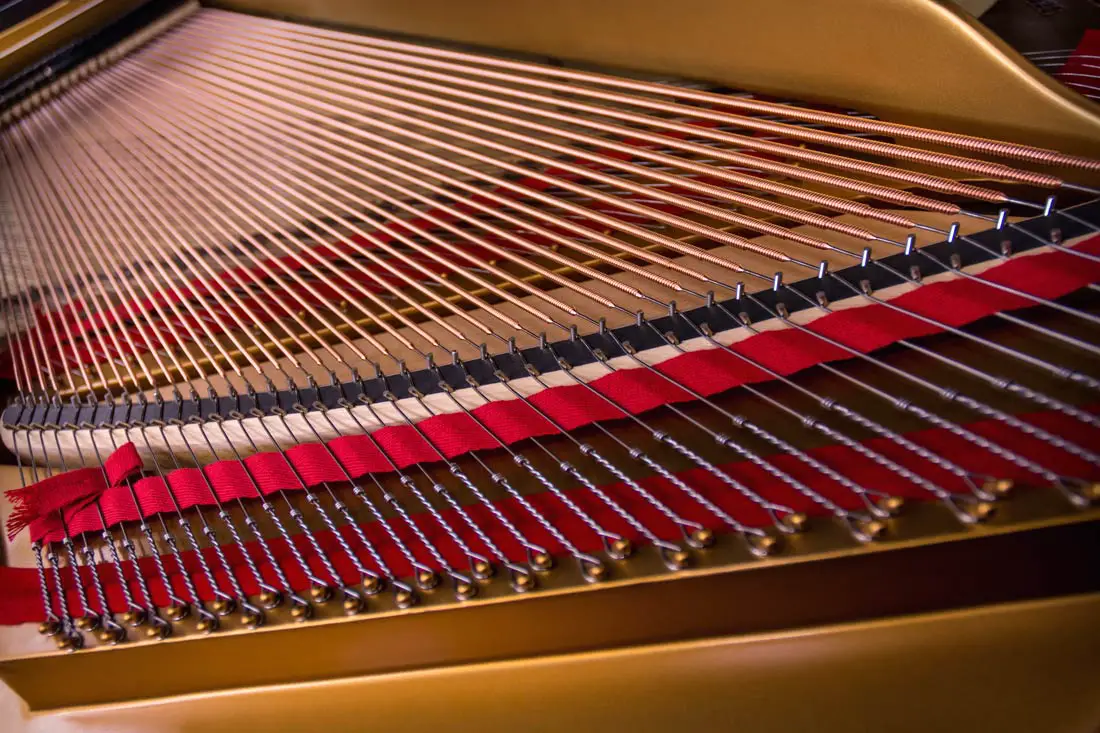
Most pianos have 3 strings for each key. On the other hand, some only have 2. These strings are wound around the tuning pins and adjustable by you or a piano tuner. As the keys get higher, the strings also become thinner. There’s a drop off in the number of strings in the bass keys.
If you look at the strings, you’ll notice that the lower keys only have a single string. These bass strings are extra large and also wound. All of the combined strings have a total pulling tension of 18 tons inside the piano. That’s the weight of 12 Toyota Carolla’s pulling on the frame. Now you understand why pianos need to be so robust.
Each hammer has 8 different parts. All of these parts work together for the felt to strike the strings. It’s interesting to see the complicated process of a single key. You may not understand the complexity of a piano until you see the process. Naming all of the parts would be redundant because of the sheer quantity. To put it into perspective, the process of a single key striking the string involves over 60 individual parts. If a key stops working, it can be difficult to diagnose the problem. However, piano technicians do a great job of figuring out the problem.
Soundboard
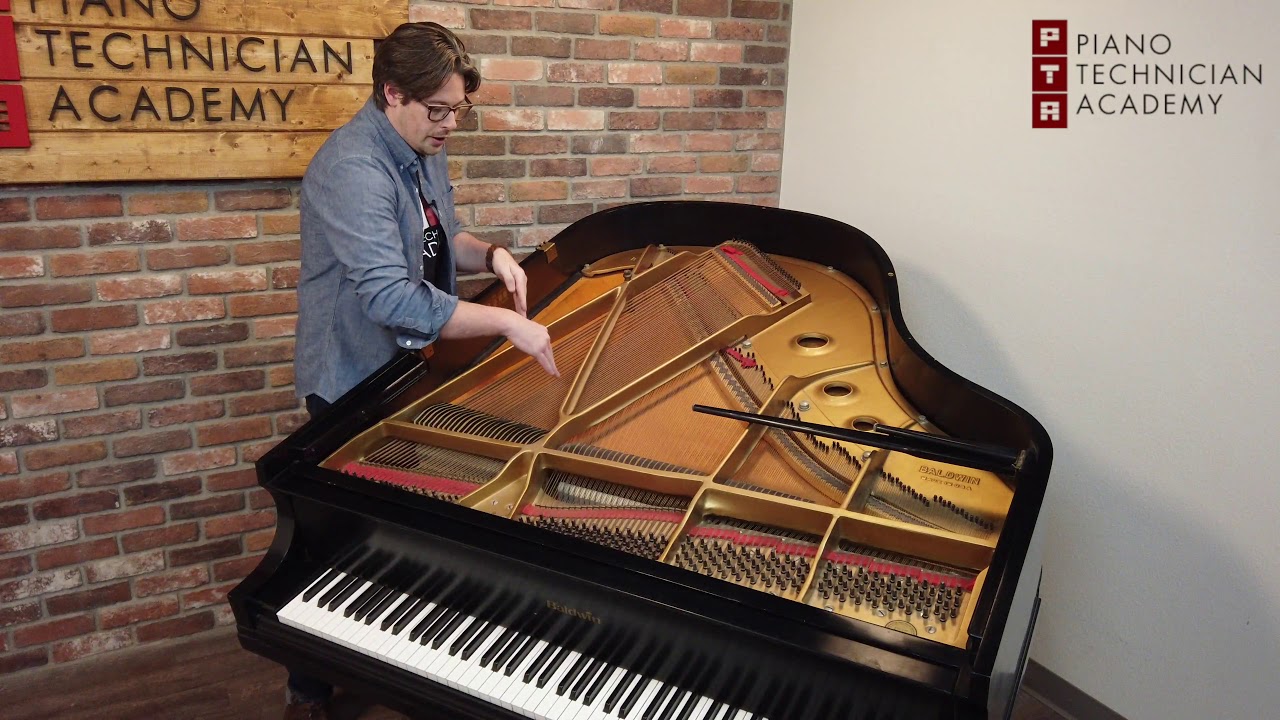
The soundboard is what resonates the sound of the strings. Without it, the volume of a piano would be comparable to an acoustic guitar. Soundboards are made of wood and for a good reason.
Wood resonates the frequencies that are pleasant to the human ear. If manufacturers used metal, for example, a piano would sound clingy and harsh. Metal amplifies the extreme high frequencies the same as it does with the lower frequencies. Some common soundboard wood types are maple, spruce, oak, and ebony.
How Many Total Parts in a Piano?
Pianos can have over 12,000 individual parts, which is mindboggling to think about. They also range from 300 to 1,000 lbs. If you’ve ever wondered how to move these beasts, it’s actually fairly simple. You can place them on a small dolly and wheel them wherever you want. Unless you’re Brian Shaw, the world’s strongest man, it will be easier to move one with the help of others.
Concert grand pianos can actually have up to 30,000 parts and are also extremely expensive, costing anywhere between $100,000 to $1,000,000. The vast amount of parts in pianos make it essential to regularly maintain them. How can you maintain a piano? The best way to do this is by hiring a piano tuner once or twice a year. On top of tuning your piano, they can make sure the piano is running smoothly.
Excellent Video Reviewing the Parts of a Piano
Conclusion
Given that pianos have countless parts, it’s understandable that they cost quite a bit. The instrument is an impressive feat of human engineering, and we can enjoy it in the comfort of our own homes. If you need a more affordable option than an acoustic piano, you might benefit from buying a digital piano.
